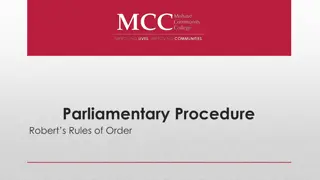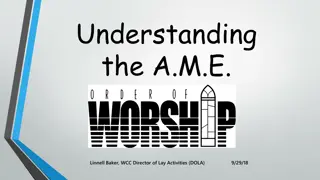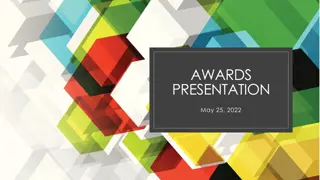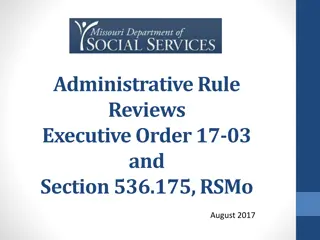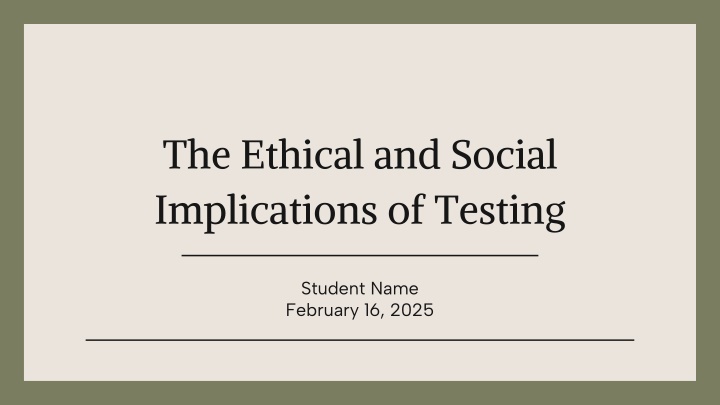
Ethical and Social Implications of Testing: Overview and Responsibilities
Explore the ethical and social implications of testing, including informed consent, confidentiality, cultural bias, and social repercussions. Understand the responsibilities of test publishers and users in ensuring validity, reliability, and ethical interpretation of results.
Uploaded on | 0 Views
Download Presentation

Please find below an Image/Link to download the presentation.
The content on the website is provided AS IS for your information and personal use only. It may not be sold, licensed, or shared on other websites without obtaining consent from the author. If you encounter any issues during the download, it is possible that the publisher has removed the file from their server.
You are allowed to download the files provided on this website for personal or commercial use, subject to the condition that they are used lawfully. All files are the property of their respective owners.
The content on the website is provided AS IS for your information and personal use only. It may not be sold, licensed, or shared on other websites without obtaining consent from the author.
E N D
Presentation Transcript
The Ethical and Social Implications of Testing Student Name February 16, 2025
Overview: Ethical Implications Informed Consent: Ensure participants understand the purpose, risks, and benefits of assessments. Confidentiality: Protect privacy while balancing legal/ethical limits (e.g., harm disclosure). Competence: Practitioners must use validated tools and interpret results accurately. Cultural Bias: Risk of misdiagnosis if assessments lack cultural sensitivity.
Social Implications & Evaluation Resource Access: Tests influence education, healthcare, and employment eligibility. Stigmatization: Labels (e.g., learning disorder ) may harm self-perception and invite discrimination. Reinforcing Inequities: Biased tools can perpetuate racial, socioeconomic, or gender disparities.
Responsibilities of Test Publishers Ensure validity and reliability Update norms regularly Provide clear manuals Address cultural fairness
Responsibilities of Test Users Verify qualifications/training Use tests appropriately Protect confidentiality Interpret results ethically Franzke (n.d.).
Testing Individuals of Cultural Diversity Different cultural norms Context shapes responses Implicit biases exist Fairness requires adaptation Okan Ekinci. (2025).
Testing Individuals of Linguistic Diversity Language barriers persist Translations can distort Limited bilingual resources Validity demands clarity
Reliability: Sources of Measurement Error Tester bias Instrument flaws Participant changes Environmental noise
Impact of Measurement Error on Reliability Reduced consistency Lower test validity Distorted score patterns Uncertain conclusions
Types of Validity Created on Canva
Extravalidity Concerns Testing bias: favoring certain groups Consequential validity: real-world consequences of test use leaving to unintended negative outcomes Testing environment: could skew results Construct irrelevance: may measure extraneous factors Results overgeneralization: might be improperly generalized
Factor Analysis Supports construct validity Tests theoretical alignment Improves instrument reliability Strengthens research conclusions
Clinical vs. Statistical Prediction Clinical approach: Flexible interpretation gisd ttir et al. (2006) reveal potential for unconscious biases Context matters for decisions Risk of overlooked data leading to improper results Leonard et al. (n.d.).
Clinical vs. Statistical Prediction Statistical approach: Standardized data gisd ttir et al. (2006) note the consistency Grove and Lloyd (2006) suggest it is more reliable Less nuance, more objectivity Combining methods improves accuracy
Application 1: Ethical & Professional Quandry Scenario: Young female confiding to a psychologist Said deceased brother was a pedophile Important to focus on client s emotional healing Address boundaries and confidentiality Withhold data per APA (2010) Consent needed for official report
Application 2: Evidence-Based Medicine (EBM) Integrate validated measures with EBM Focus on transparent decision-making processes Monitor outcomes across treatment sessions Adapt assessments to contextual factors Use interventions with research evidence (EBM 2.0, n.d.)
Application 3: Selecting Valid Instruments Scenario: 30-year-old anxious when change happens Hypothesis: Elevated intolerance of uncertainty contributes to this distress Fergus (2013) compares 3 IU measures: All share a core construct IUS widely validated for broad use Results inform targeted intervention
References gisd ttir, S., White, M. J., Spengler, P. M., Maugherman, A. S., Anderson, L. A., Cook, R. S., Nichols, C. N., Lampropoulos, G. K., Walker, B. S., Cohen, G., & Rush, J. D. (2006). The meta-analysis of clinical judgment project: Fifty-Six years of accumulated research on clinical versus statistical prediction. The Counseling Psychologist, 34(3), 341 382. https://doi.org/10.1177/0011000005285875 American Psychological Association. (2010). Ethical principles of psychologists and code of conduct. https://www.apa.org/ethics/code Cronje, J. H., Watson, M. B., & Stroud, L. A. (2022). Guidelines for the Revision and Use of Revised Psychological Tests: A Systematic Review Study. Europe's journal of psychology, 18(3), 293 301. https://doi.org/10.5964/ejop.2901 EBM 2.0. (n.d.). What is evidence-based medicine? https://www.ebm2point0.com/what-is-evidence-based- medicine/ Fergus, T.A. (2013). An examination of three self-report measures of intolerance of uncertainty: An examination of structure and incremental explanatory power in a community sample. Psychological Assessment, 25(4), 1322-1331. doi:10.1037/a0034103 Fraznke, K. (n.d.). A sociological lens on linguistic diversity: Implications for writing inclusive multiple-choice assessments. University of British Columbia. https://languagesciences.ubc.ca/news-events/announcement- research-news/feb-3-2023-sociological-lens-linguistic-diversity
References Gregory, R.J. (2014). Psychological testing: History, principles and applications (7th ed.). Boston, MA: Pearson. Grove, W. M., & Lloyd, M. (2006). Meehl s contribution to clinical versus statistical prediction. Journal of Abnormal Psychology, 115(2), 192-194. doi: 10.1037/0021-843X.115.2.192 Holden, L. R., & Tanenbaum, G. J. (2023). Modern Assessments of Intelligence Must Be Fair and Equitable. Journal of Intelligence, 11(6), 126. https://doi.org/10.3390/jintelligence11060126 Kosson, D. S., Neumann, C. S., Forth, A. E., Salekin, R. T., Hare, R. D., Krischer, M.K., & Svecke, K. (2013). Factor structure of the Hare Psychopathy Checklist: Youth Version (PCL:YV) in adolescent females. Psychological Assessment, 25(1), 71- 83. doi: 10.1037/a0028986 Leonard, H., Thorn, A., & Finn, M. (n.d.). Combatting the lack of implicit bias training in medical education. Kennedy Krieger. https://www.kennedykrieger.org/community/initiatives/maryland-center-developmental- disabilities/information-dissemination/posters/combatting-lack-implicit-bias-training-medical-education Mathieu, C., Hare, R. D., Jones, D. N., Babiak, P., & Neumann, C. S. (2013). Factor structure of the B-Scan 360: A measure of corporate psychopathy. Psychological Assessment, 25(1), 288-293. doi:10.1037/a0029262 Messick, S. (1989). Validity. In R. L. Linn (Ed.), Educational Measurement (3rd ed., pp. 13 103). Washington, DC: American Council on Education and National Council on Measurement in Education.
References Okan Ekinci. (2025). Illustration of diverse people around a globe symbolizing global teamwork and international collaboration. Vecteezy. https://www.vecteezy.com/vector-art/50496720-illustration-of-diverse-people-around-a- globe-symbolizing-global-teamwork-and-international-collaboration Williams C. L. (1987). Issues surrounding psychological testing of minority patients. Hospital & community psychiatry, 38(2), 184 189. https://doi.org/10.1176/ps.38.2.184 Youngstrom, E. A. (2013). Future directions in psychological assessment: Combining evidence-based medicine innovations with psychology's historical strengths to enhance utility. Journal of Clinical Child & Adolescent Psychology. 42(1), 139-159. doi: 10.1080/15374416.2012.736358





